Battle-ready warriors: Viking weapons and armour explained
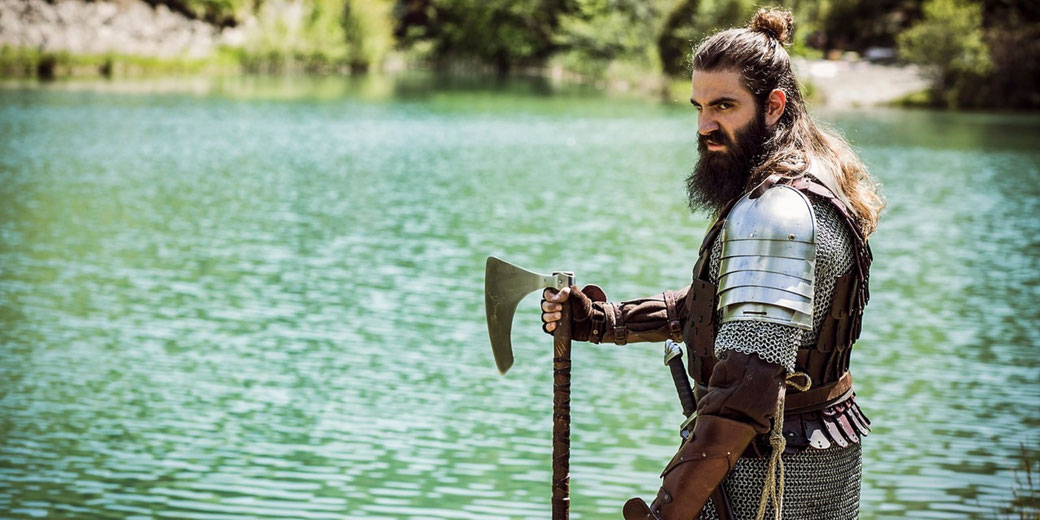
Power in the early medieval world often depended on one's ability to fight, and to win. The warriors who ventured across lands and seas trusted in their arms and armor because these tools both protected them and helped express their identity.
These tools became marks of personal skill valued by warriors and displays of strength that helped unite their group.
How were Viking weapons made?
Viking weapons were forged using iron, which blacksmiths produced by heating bog iron ore in simple clay furnaces.
These ores, found in marshy areas across Scandinavia, were smelted by means of charcoal in small bloomery furnaces to produce usable iron.
The resulting iron bloom was then hammered repeatedly to remove impurities before being worked into blades, spearheads, or axe heads.
While the process was very demanding, it allowed for a steady supply of iron that was sufficient for making most weapons, though high-quality steel was uncommon and costly.
Blades were often made using pattern-welding, a technique used by earlier Germanic smiths, which combined layers of iron and steel that alternated in position to produce stronger and more flexible swords with distinctive ripple patterns.
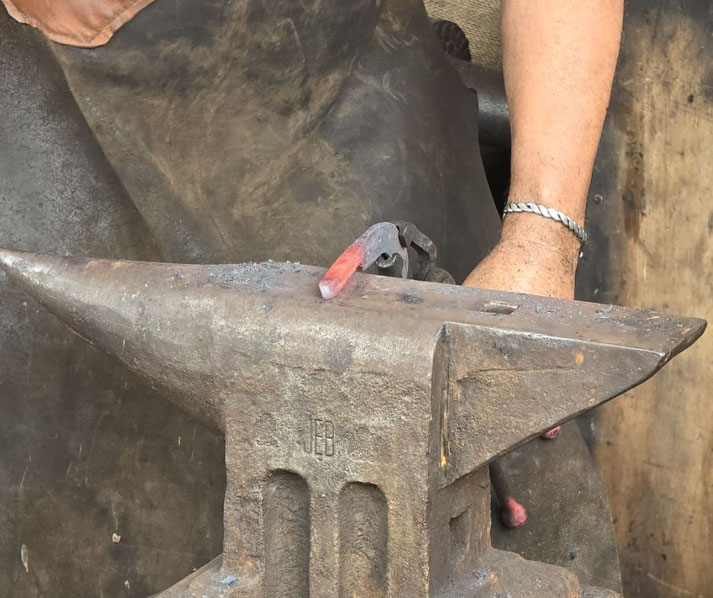
The skill of the blacksmith determined the strength and sharpness of Viking weapons.
Some blades included imported materials, especially those traded from the Frankish Empire, such as the famed Ulfberht swords.
These swords, of which about 170 examples have been discovered and dated between AD 800 and 1000, bore inlaid inscriptions and were made with high-quality steel.
Some of these contained higher carbon content and fewer impurities than local Scandinavian iron.
However, true crucible steel was extremely rare in Europe and likely reached Viking craftsmen through long-distance trade.
Most local weapons, however, used materials that were not as thoroughly purified.
Blacksmiths used basic tools, including anvils, hammers, tongs, and grindstones, to shape and sharpen weapons.
Decorations, such as engraved lines or silver inlay, were added to the most valuable items, especially those belonging to wealthy warriors or chieftains.

The most common Viking weapons
The most widespread Viking weapon was the spear. Spears required less iron than swords and could be used for both thrusting and throwing.
Heads were typically leaf-shaped and varied in length from about twenty to sixty centimetres.
Some had barbs or wings to help catch enemy shields or prevent withdrawal from a wound.
Warriors often carried more than one spear into battle, and they also fought with a wooden shield.
The spear's wooden shaft was usually made from ash, prized for its flexibility and durability.
According to Scandinavian law codes like the Gulaþing, all free men were expected to own such weapons for use in local defence.

Axes were another popular choice. The Viking axe could range from small hand axes to larger two-handed versions such as the Dane axe, which became especially widely recognised among Danish and Anglo-Scandinavian warriors during the 10th century.
Early axes had broad, crescent-shaped blades, and some featured extended cutting edges for powerful blows.
These weapons could be crafted relatively cheaply and were easily maintained, so they were available to almost all free men.
Swords, in contrast, were rare and prized. They were double-edged, typically about ninety centimetres in length and weighing between one and one-and-a-half kilograms.
Many were passed down through generations. The pommels and hilts were often decorated with silver, bronze, or animal motifs.
In addition to these primary weapons, many Vikings carried seaxes, or long knives, which served both practical and combat purposes.
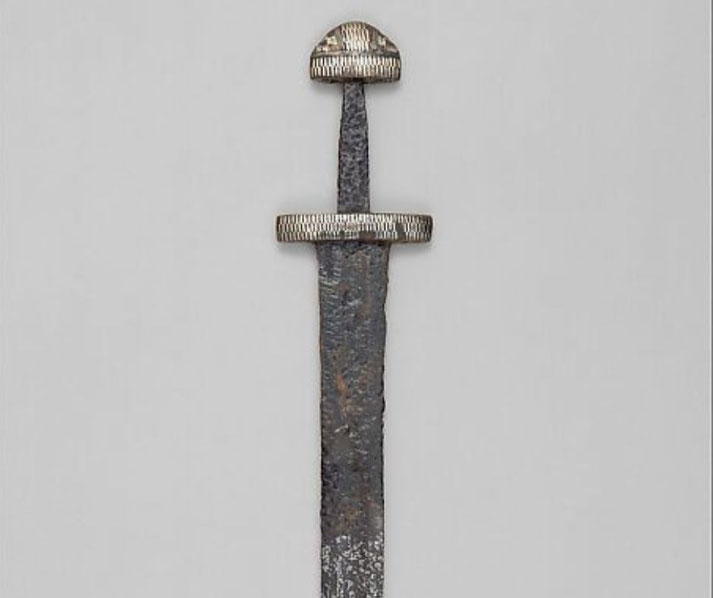
Viking armour
Most Viking warriors protected themselves with round wooden shields, which they held with a central grip behind a metal boss.
These shields were usually made of linden wood, which was light and good at soaking up impact.
They measured about eighty to ninety centimetres in diameter and could be painted or strengthened with metal or leather.
The boss, typically ten to fifteen centimetres wide and made of iron, protected the warrior's hand.
Shields were essential for forming the shield wall, a formation where warriors stood side by side, as they locked shields in order to create a defensive barrier.
This tactic was especially effective during the early stages of battle.
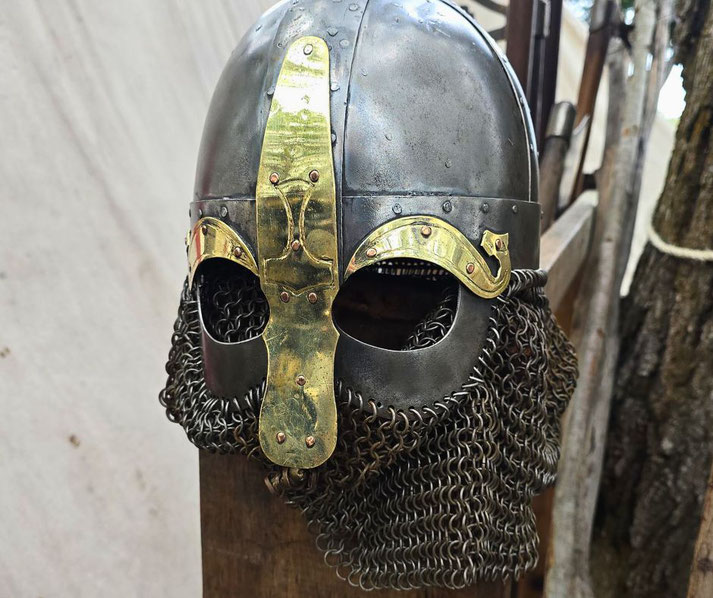
Helmets and body armour were far less common due to cost. Helmets were typically made of iron and covered the top of the head, often with a nose guard, and they did not have the horned decorations often shown in modern pictures.
The popular image of horned Viking helmets stems from 19th-century costume designs, particularly those used in Wagnerian opera.
The few surviving examples, such as the Gjermundbu helmet found in a 10th-century Norwegian burial mound in 1943, indicate that well-made helmets offered solid protection.
Mail shirts were the most advanced form of Viking armour. They were made of thousands of iron rings that had been joined together.
Often, there were between 20,000 and 30,000 in a single shirt, though some modern recreations suggest even higher counts.
These were expensive and time-consuming to produce, so they were generally worn by wealthy warriors or leaders.
Most warriors relied on thick woollen tunics or leather jerkins for some basic protection against cuts and blows.
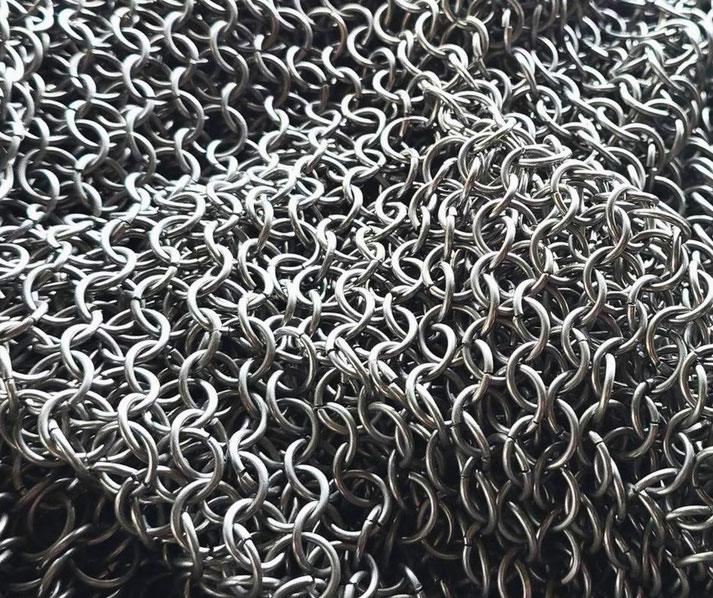
The importance of weaponry to Viking social status
In the hierarchical structure of Viking society, weapons, particularly swords, were potent status symbols.
It was expensive to craft a fine sword, thus ownership often signified wealth and high social standing.
An ornately decorated sword could speak volumes about a warrior's victories, lineage, and prestige.
This societal link between martial prowess and social status is evident in the sagas and epic poems of the time, where heroes are often portrayed with their trusted weapons at their side.
Viking armour, too, had symbolic value. Chainmail and helmets, due to their high production costs, were likely limited to the wealthier Viking warriors.
Possessing such protective gear was not only a tactical advantage but also a display of wealth and power.
Moreover, shields were often painted and decorated, serving as a canvas to exhibit personal symbols, lineage, or affiliations, adding another layer of cultural meaning to these practical items.
The spiritual world of the Vikings was deeply intertwined with their warfare. Weapons played a significant role in Viking rituals and mythology.
Spears, for example, were associated with Odin, the chief of the gods, and were often used in religious rituals and ceremonies.
Swords were sometimes given names and the Vikings believed that this could grant it supernatural attributes or summon the qualities associated with its name.
Some examples of sword names included gramr, meaning fierce, leggbir, which means leg biter, and gunnlogi translated as battle flame.
Naming a weapon created a personal connection between the warrior and the sword, treating it as a companion rather than a mere tool.
Weapons were often included in the burial rites of high-ranking individuals, symbolising the belief in a warrior's afterlife.
Viking warriors believed that dying in battle could earn them a place in Valhalla, Odin’s hall for the heroic dead, so they needed to be buried with their weapons and armour.
Interestingly, the 'berserkers', fierce Viking warriors, brought another symbolic dimension to the armour.
They were said to wear bear or wolf skins into battle, believing these 'spirit animals' lent them strength and ferocity.
This aspect of Viking warfare reflects the intersection of their combat practices with their rich animistic and totemic spiritual traditions.
The cultural and symbolic significance of Viking weapons and armour was immense, permeating societal, spiritual, and personal realms.
These objects were much more than tools for offense and defense; they encapsulated a warrior's identity, status, beliefs, and societal roles in the Viking Age.
What do you need help with?
Download ready-to-use digital learning resources
Copyright © History Skills 2014-2025.
Contact via email
With the exception of links to external sites, some historical sources and extracts from specific publications, all content on this website is copyrighted by History Skills. This content may not be copied, republished or redistributed without written permission from the website creator. Please use the Contact page to obtain relevant permission.





